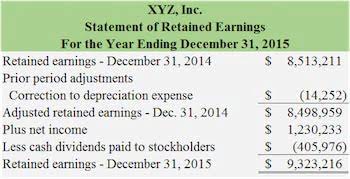How does the account receivable present in the cash flow statement?
Any modern invoice workflow should leverage a fusion of OCR (optical character recognition), AI (artificial intelligence), and managed services. This trifecta will take the “entry” out of data entry and allow you to scale your supplier relationships without needing to increase your AP department headcount. Establish separation of duties and internal controls within your AP process.
Make things easier in the long-run by keeping a list of approved vendors that team members can rely on. Notes payable and Accounts Payable are examples of current obligations; nevertheless, several key distinctions exist between the two types of accounts. The obligations the company must fulfill in the form of Notes Payable might be either short-term or long-term. Accounts Payable are usually considered short-term obligations that must be paid within one year of the invoice date.
- Accounts payable management is essential for you as a small business.
- This is because it ensures that your accounts payable contributes positively towards your business’s cash flows.
- Suppose a company has an average accounts payable period of only 30 days.
- This is an indicator of a healthy business and it gives a business leverage to negotiate with suppliers for better rates.
A company’s total accounts payable (AP) balance at a specific point in time will appear on its balance sheetunder the current liabilities section. Accounts payable are debts that must be paid off within a given period to avoid default. At the corporate level, AP refers to short-term debt payments due to suppliers. Accounts receivable refers to the amount that your customers owe to you for the goods and services provided to them on credit. Thus, the accounts receivable account gets debited and the sales account gets credited. This indicates an increase in both accounts receivable and sales account.
According to PhilHealth, these changes are in line with the Universal Health Care Law of 2019 and are part of the agency’s plan to expand benefits to members. By removing many of the easiest opportunities for fraud, automation helps prevent bad behavior before it can begin. An automated AP software solution allows you to visualize your entire process from beginning to end without having to keep track of written documents or separate files. The data generated by an automated system makes it easier to identify bottlenecks, inefficiencies, and other problem areas. By mapping your workflow, you can take action to address those concerns before they become a larger issue. She specializes in scientific documentation, research, and the impact of AI & automation in finance, accounting and business in general.
Avoid Duplicate Payments
In other words, it can now utilize additional cash of $4,500 for 30 extra days. Using the accrual concept of accounting, accounts receivables have increased and sales i.e. net profit has also increased respectively. Account receivables are the amount of money due to enterprise for goods or services delivered to customers but not yet paid by them. It refers to the outstanding invoices the enterprise has or the customers owe the enterprise. The value of inventory purchased is debited to the inventory account in the books of the company. Late payments can have a negative impact on your credit score and may result in additional fees and charges.
- Accounts payable automation software will help create automated systems for your entire payable department.
- You can calculate the accounts payable by generating accounts payable aging summary report.
- We’ve highlighted some of the obvious differences between accrued expenses and accounts payable above.
To maintain vendor relationships, it’s important to address and resolve any invoice disputes as soon as possible. If a vendor issue arises where you were overcharged or a discount wasn’t applied and you make the payment, you lose the ability to argue it down the road. Therefore, it is critical to keep track of all vendor disputes and resolutions to track funds more efficiently. The accounts payable system becomes more efficient with the less money you owe.
How Can You Improve Your Accounts Payable Turnover Ratio?
Accounts payable can impact the cash flow of a business in the short term. Therefore, it represents an important line item under the operating activities of the cash flow statement. Every business must record all its payables and receivables to measure the company’s cash flows. Accounts receivables are part of “Cash In” vs accounts payable which equates to “Cash Out”.
What Is the Cash Flow Statement?
Using digital invoices can shorten payment times, help prevent errors, and streamline your process, ultimately saving time and money. Faster payments not only put you in the good graces of suppliers and partners, they can help you avoid late fees. Nanonets is an AI-powered Accounts Payable solution that makes it easy to automate your invoicing and payments.
# Prioritize invoices
He is a CFA charterholder as well as holding FINRA Series 7, 55 & 63 licenses. He currently researches and teaches economic sociology and the social studies of finance at the Hebrew University in Jerusalem. Just because you have a healthy cash reserve and payment reminders in place doesn’t mean how charities make money you shouldn’t actively look for discounts, too. When you begin a new vendor relationship, you’ll need to review the contract to get a clear idea of what’s expected. To facilitate this, designate a person or a team to keep an eye on the contracts’ terms and dates, especially before renewals.
Before answering the question ‘how does accounts payable affect cash flow? ’, it’s important to understand exactly what is meant by the term accounts payable, also referred to as AP. A negative cash flow occurs if the company pays more than it receives. A positive cash flow occurs when it receives more cash than it pays to its creditors. The company will add back $110,000 to its net income as it has to pay the cash in the future.
Also, an efficient accounts payable management process prevents fraud, overdue charges, and better cash flow management. Further, it also ensures proper invoice tracking and avoiding duplicate payment. There are a number of duties that the accounts payable clerk performs. He keeps a track of all the payments and expenses and maintains records. Further, the clerk undertakes the processing, verifying, and reconciling the invoices.
A Decreasing AP Turnover Ratio
However, Accounts Payable can also be considered a debit, depending on how you structure your chart of accounts. A debit balance in a payable account means that the company owes money, while a credit balance indicates that the company is owed money. The cause of the increase in accounts payable (and cash flows) is the increase in days payable outstanding, which increases from 110 days to 135 days under the same time span.
It includes activities essential to complete a purchase with your vendor. So, considering a complete accounts payable cycle, your accounts payable process must include the following steps. Accordingly, accounts payable management is critical for your business to manage its cash flows effectively. Although accounts payable would represent a small proportion of cash flow on the CFS, it will directly impact the operating activities section.




Commentaires récents